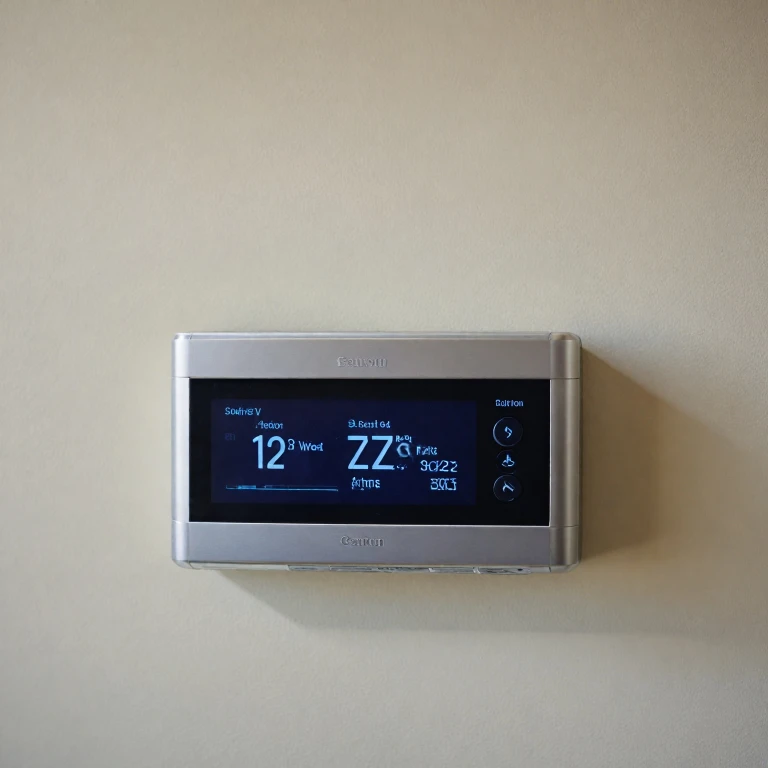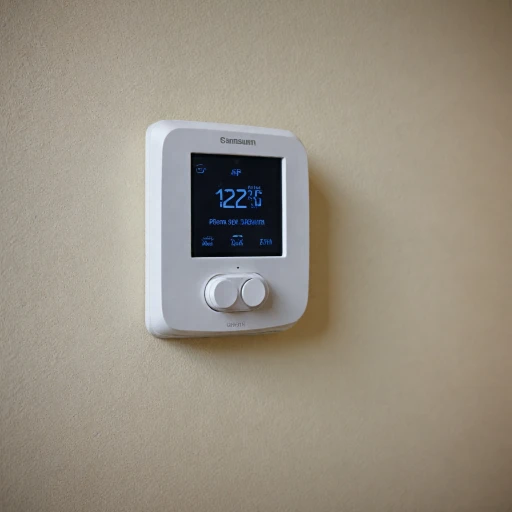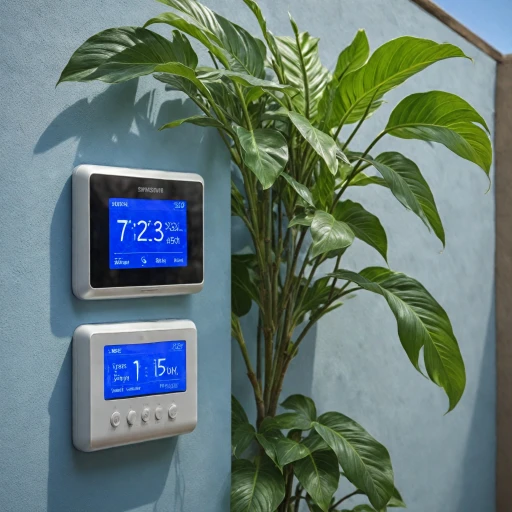The Role of Temperature Probes in Smart Thermostats
Unlocking the Potential of Temperature Probes
Smart thermostats have revolutionized home comfort, and at the heart of their advanced functionality is the temperature probe. These small, often wireless devices play a crucial role in accurately monitoring the temperature of your home environment. Whether you're looking for improved energy efficiency or precise control over your heating and cooling systems, understanding the role of temperature probes is essential. Temperature probes serve as the primary sensor for smart thermostats, providing real-time temperature readings of your home. This precise data allows the thermostat to make informed decisions on when to adjust the heating or cooling to achieve optimal comfort. The use of NTC sensors, known for their stability and accuracy, enhances the precision of these readings, offering a robust solution for temperature management. For homeowners who enjoy grilling, temperature probes extend beyond indoor environments. Products like wireless meat thermometers or grill smokers use similar probe technology to ensure food reaches the perfect temperature. Stainless steel probes are common in these applications due to their durability and ability to withstand high heat, making them an invaluable tool for culinary enthusiasts. In terms of cost, smart thermostats with temperature probes can be more expensive than their counterparts without them. However, the price is offset by the benefits they offer, such as improved energy efficiency and more consistent home comfort. Many products offer diverse options, from basic models with a single sensor to advanced versions capable of integrating with home automation systems through platforms like iOS and Android. The delivery and installation of these devices are generally straightforward, with options available to suit various needs and preferences. Whether you're looking to install a new system or upgrade an existing one, understanding the installation and placement considerations for temperature probes can enhance the effectiveness of your smart thermostat and ensure you make the most out of your investment.Benefits of Temperature Probes for Home Comfort
The Advantages of Integrating Temperature Probes for Home Comfort
Using temperature probes in smart thermostats significantly elevates the user experience by delivering more precise temperature management within homes. By optimizing ambient conditions, these probes ensure not just comfort but also energy efficiency, a feature keenly sought by many consumers. Temperature probes help keep your home environment consistent by providing accurate temperature readings. Unlike traditional thermostats that rely on a single location's temperature data, these probes can be strategically placed throughout your home, offering a more comprehensive view of climate conditions across different rooms. This feature is crucial for anyone seeking real-time adjustments to alter settings for maximum comfort. Probes offer:- Easier Climate Control: With data from various corners of your home, smart thermostats can make informed decisions about when to activate heating or cooling systems. This nuanced control helps maintain a stable temperature range optimal for comfort.
- Energy Savings: By delivering precise temperature readings, smart thermostats with probes can adjust HVAC activity, reducing energy usage. Over time, minimized energy consumption can lead to notable cost savings, justifying the price of the initial investment in these smart products.
- Customization Options: Specific probes can cater to different needs, offering custom parameters for rooms based on their usage, like a child's room or a home office.
From ovengrill configurations to settings controlled via iOS or Android, these probes open endless possibilities to enrich comfort without manual temperature checks, proving indispensable for contemporary smart homes.
Installation and Placement of Temperature Probes
Optimal Placement for Temperature Probes in Your Home
When it comes to smart thermostats, the placement of temperature probes is crucial to ensure accurate temperature readings and maximize energy efficiency. Achieving optimal performance hinges on strategic installation, an aspect that often differs with each home and varies based on the design and layout. Firstly, consider the typical hot and cold zones of your home. Temperature probes should ideally be placed in areas that accurately represent the overall temperature of your living space, avoiding spots near windows or direct sunlight that could lead to skewed readings. Installing inrooms where temperature consistency is a priority, such as the living room or a heavily-used kitchen, can provide a more reliable base for thermostat adjustments. Additionally, bedroom placement is beneficial given the importance of maintaining a comfortable sleep environment. Some modern probes offer flexibility with wireless options that can be conveniently moved, creating adaptability for different seasonal needs or events like hosting guests. For those integrating probes with specialized appliances like oven grills or smoker setups, NTC sensor probes, known for their accurate temperature delivery, can be critical. These are effective in both standard and BBQ scenarios, delivering precise control whether you're working with a grill smoker or simply ensuring your bedroom stays at an ideal temp. In considering the array of products available, stainless steel probes are often recommended due to their durability and consistent performance across a wide temperature range. This makes them an excellent choice for both home settings and culinary applications such as a wireless meat thermometer for a grill smoker. Making educated decisions on probe placement and type ensures you get the best outcomes from your smart thermostat investment, ultimately enhancing your comfort and efficiency levels both in real-time and long term.Comparing Smart Thermostats with and without Temperature Probes
Evaluating Options: With or Without Temperature Probes
When considering smart thermostats, you'll come across models both with and without integrated temperature probes. The presence of a temperature probe in a thermostat can significantly influence both its functionality and price. Smart thermostats equipped with temperature probes provide real-time, accurate temperature readings, allowing for precise climate control in your home. This means that, unlike models without probes, these products can adjust HVAC systems based on detailed, specific room temperatures rather than a single averaged temp reading. This increased accuracy can result in better energy efficiency and enhanced home comfort. On the other hand, opting for a smart thermostat without a temperature probe might come at a lower initial cost. However, you might miss out on some features like detailed temperature data and integration potential with other smart devices, such as grills, smoker systems, or oven grills. For instance, when using wireless meat thermometers or ntc sensors, thermostats with probes can communicate with these devices for integrated control over a kitchen or smoker setup. Before adding any smart thermostat to your cart, consider your home’s specific needs. If precision and integration are priorities, a thermostat with a built-in temperature sensor is likely the best choice. Meanwhile, if you're focusing on a budget-friendly option, a probe-less model might be sufficient, albeit with fewer features. Ultimately, the decision between smart thermostats with or without temperature probes will depend on your specific requirements and how you view long-term value versus short-term savings. As technology continues to evolve, the availability of options will likely expand, offering more fine-tuned solutions across various price points.Common Issues and Troubleshooting Temperature Probes
Potential Challenges and Solutions for Temperature Probe Issues
Temperature probes in smart thermostats are essential for maintaining precise temperature readings. However, they sometimes encounter challenges that can impact their effectiveness. Here's what to look out for:- Inaccurate Readings: Over time, temperature probes may provide skewed data. Regular calibration of your sensor probe is recommended to ensure accurate temperature monitoring. Products featuring high-quality materials, like a stainless steel probe, typically offer better durability and reliability.
- Probe Placement Issues: The location where you place your temperature probe significantly affects its accuracy. Proper installation—whether integrated in an oven grill or a wireless meat thermometer—ensures reliable performance. Consult the manual for recommended placements for optimal temperature delivery.
- Interference with Wireless Signals: Wireless probes can suffer from signal interference, which can affect real-time temperature data transmission to your iOS or Android devices. To mitigate this, position your thermostat and probes away from devices that can cause interference.
- Battery Life Concerns: For wireless options, battery life is a common issue. Checking your batteries regularly and considering products with battery status alerts can help avert unplanned outages.
- Environmental Factors: Outdoor temperature probes can be susceptible to extreme conditions, impairing their function. Opt for products designed to withstand wide temperature ranges if used in outdoor settings, such as a grill smoker.
- Compatibility Problems: Not all temperature probes are compatible with every smart thermostat. Before you add a product to your cart, check for compatibility with your specific model to avoid any functionality issues.





